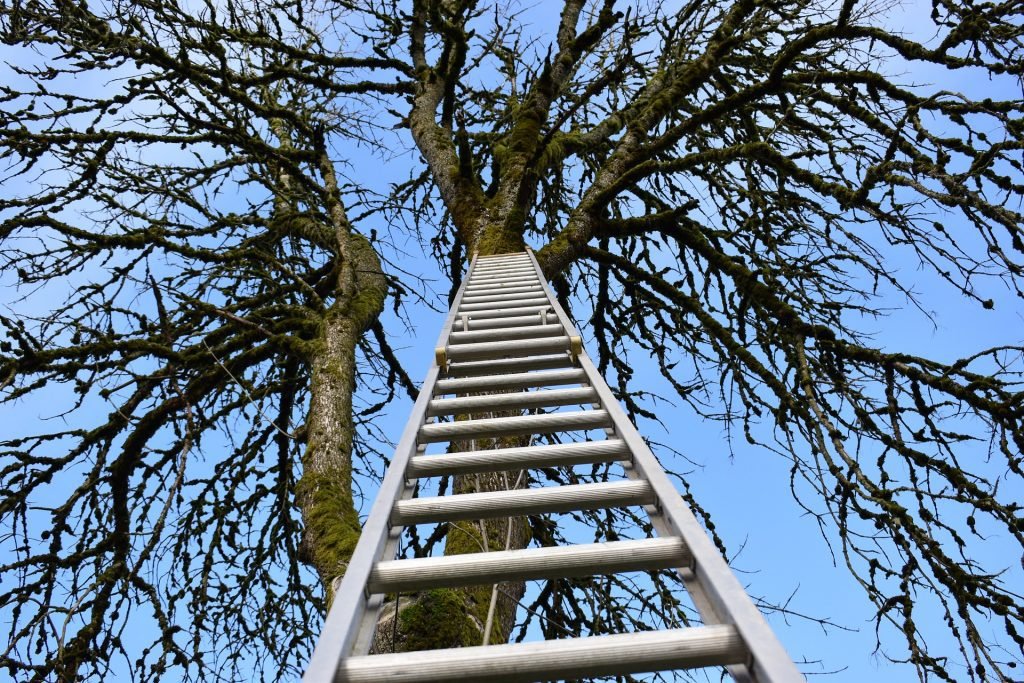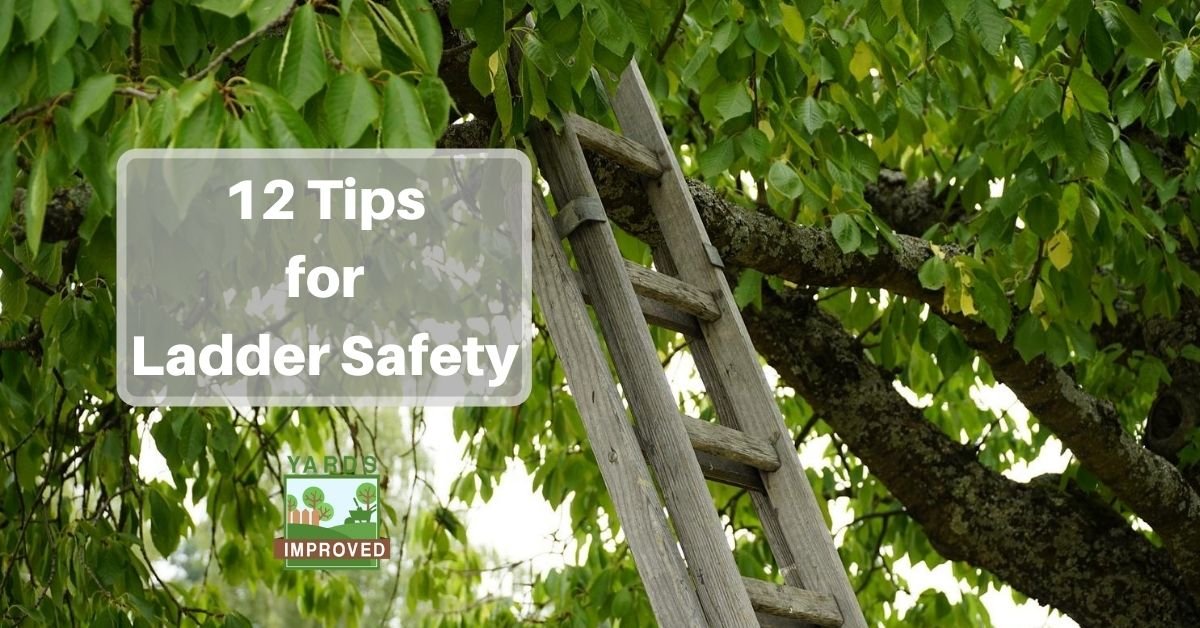A ladder is an important part of most people’s yard work equipment. You may need it to trim tall hedges or low-hanging tree branches. It comes in handy for painting the house and cleaning the gutters. Or you may use it for hanging holiday decorations!
However you use your ladder, it’s important to use it safely. A fall, even from a few feet, can lead to serious injury or even death. In the US alone, over 164,000 people end up in the emergency room each year from ladder-related injuries. Over 300 people die from falls off ladders, and most of these are from less than 10 feet.
With proper safety precautions, it’s likely that most of these accidents – and tragedies – could have been avoided. Here are some important tips for staying safe when you use a ladder!
Check The Ladder’s Integrity
Every time you use your ladder, check it to make sure everything is in working order. Look over the rungs, joints, and other parts of the ladder. If anything is loose, be sure it’s tightened before climbing the ladder. If you see rust or damage, don’t use the ladder at all.
If you can see the damage or feel weaknesses when you’re not even using the ladder, imagine how bad it will be when your weight is on it. Even if the issue seems minor, it will get worse under stress.
Even if it’s a step that you don’t use, remember that all the parts of the ladder support each other. The stress is spread out across the rungs and supports, so one weak point affects the whole thing.
Dry It Off
A wet ladder is a slippery ladder. When possible, dry off the metal rungs and supports of your ladder to help keep yourself from slipping.
There may be times that you can’t avoid some dampness or water on the ladder. However, do what you can to minimize it. Also, be sure to wear proper footwear!
Use The Ladder On Level Ground
We’ve all seen – and probably laughed at – videos of people who try all kinds of weird configurations to get a ladder to reach where they want it to go. Please. Don’t try it.
Be sure that your ladder is placed firmly on level ground. Both legs need to be touching solid ground. If the soil is soft, you may have to use a board to firm it up. However, be sure it is solid.
Climbing a ladder is a balancing act, so having solid footing is key.
In the market for a step ladder for your yard? Check out the top models!
1:4 Rule For Extension Ladders
Angles are another key point to making your ladder safe.
If you’re using an extension ladder or a straight ladder, you’ll have to lean it against a wall, tree, or another stable surface. But you also have to think about the angle at which you place it.
For every four feet the ladder ascends, you need the base to be one foot from the wall it’s leaning against. So if the top of the ladder is twelve feet from the ground, the base has to be three feet out. Remember, this is based on the top, not on how high you need to go.

Don’t Climb To the End of the Ladder
Ladders are designed to be longer than the point you’re climbing to. In other words, that last rung isn’t for you to stand on.
With a straight ladder or extension ladder, stay at least three feet below the top. That’s normally three rungs. For a stepladder, the top is a shelf, not a step. And it’s best not to use the last real step, either.
3-point Rule
The 3-point rule ties into the last point.
Always have two feet and one hand, or two hands and one foot, in direct contact with the ladder. That might be easy to remember when climbing up or down, but it’s easy to get careless when in position.
However, keeping proper balance means being firmly attached to the ladder. Don’t try to hang off the edge. And avoid carrying too much.
If the work you’re doing requires two hands, you should consider some kind of scaffolding.
Face The Ladder
Proper balance on the ladder requires that the ladder is in front of you. Don’t try to climb or use it with your body turned away from it.
Don’t Overreach
It can be tempting to get just a little more done without moving the ladder. Or perhaps the ladder isn’t quite tall enough.
However, this throws off the balance of the ladder and your balance, as well. Even a properly-positioned ladder will kick out from under you if you move too far off the center of gravity.
Instead, descend and move the ladder into a better position. Or get a longer tool to do the task at hand. If you still can’t reach without overstretching, you need a bigger ladder or a professional who has one.
Never Use Metal Ladders Around Electrical Lines
The points above deal mainly with keeping the ladder properly balanced and you balanced on it. But you also have to be careful about where you’re working.
Metal ladders will conduct electricity. That includes aluminum. Be sure to keep them away from electrical lines of any type. Of course, never lean them directly against the lines. But allow space, too, in case the ladder shifts.
Don’t Get Knocked Off By A Door Opening
Sometimes, it’s necessary to use a ladder in front of a door. If so, be sure that you block the door or lock it. The last thing you need is for someone to open the door from the inside, banging into the ladder.
Don’t Allow Young Children To Climb Ladders
Ladder safety also means protecting others. Never leave any kind of ladder in a position where a child will be tempted to scale it. Store ladders securely. Keep an eye on any children who may be around.
Store The Ladder Correctly
When you’re not using your ladder, be sure to put it away. But first, make sure it’s clean. If it makes sense, dry it off, too. That might not matter if you store it on your truck or outside the house, but if you store it in the garage, shed, or basement, it can help keep it in good shape.
Wherever you store your ladder, make sure it’s secure. Chain it to something stable if it’s outdoors. It’s a wonderful tool, but it can be turned against you by opportunistic thieves.
Conclusion
Stay safe when using your ladder! Make sure it’s in good shape and properly positioned to do the job. And don’t try to do too much with it. With proper caution, you can get the job done without the risk of ending up visiting urgent care!









